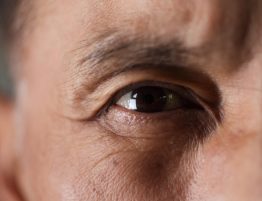
Black people who have had strokes have more cardiovascular risk factors than people who are not Black, but those risks may be reduced through intensive interventions, new research suggests.
The study, published Thursday in the American Heart Association journal Stroke, found that Black adults who had strokes due to severe blockages of a major artery in the brain were younger, more likely to have high blood pressure and Type 2 diabetes and less likely to be physically active than their non-Black peers. But one year of aggressive, individualized medical management improved their blood pressure levels and physical activity scores, reducing those disparities.
“Modifiable stroke risk factor differences between Black and non-Black adults were found at enrollment; however, our study showed they may be resolved by tailoring care to include lifestyle coaching, medication alterations or additions if appropriate, access to routine health care support and regular physician follow-up,” Dr. Ashley Nelson, a co-author of the study, said in a news release. At the time of the study, Nelson was a neurology resident at the Medical University of South Carolina in Charleston.
“Intense risk factor management has an important role in improving or eliminating these risk factor disparities in Black adults,” Nelson said.
Using health data from SAMMPRIS, the Stenting and Aggressive Medical Management for Preventing Recurrent Stroke in Intracranial Stenosis study, researchers analyzed medication use and vascular risk factors, including systolic and diastolic blood pressure, levels of low-density lipoprotein (“bad” cholesterol) and blood glucose, and physical activity scores for Black and non-Black people who had recently had strokes. Physical activity levels were measured using a self-assessed questionnaire that looked at how frequently participants got moderate and vigorous exercise on a weekly basis.
Researchers analyzed data for 104 Black adults and 347 non-Black adults at the beginning of the study and one year later. The non-Black participants included white, Asian and Hispanic adults who were looked at collectively because none of the groups was large enough to analyze separately.
At the time of enrollment, Black study participants were an average 57 years old, compared to 61 for non-Black participants. About 95% of Black participants had high blood pressure, compared to 87.5% of non-Black participants. More Black participants (52.9%) had Type 2 diabetes than non-Black participants (39.7%). The Black adults also had higher average diastolic blood pressure readings, 82.4 mmHg versus 79.5 mmHg, and lower physical activity scores.
Following enrollment, participants took part in a one-year aggressive, medical management intervention that consisted of intensive medical control of blood pressure, cholesterol, diabetes, smoking and physical activity levels as well as lifestyle coaching and regular follow-up visits with health-care professionals.
After one year of the intervention program, the disparity in diastolic blood pressure (the “bottom” number in a measurement) shrank. The average diastolic measurement for Black participants dropped to 74.7 mmHg, compared to 75.5 mmHg for all other participants. Diastolic blood pressure reflects pressure in blood vessels between heart beats. A normal reading is below 80 mmHg.
“We tend to focus on systolic blood pressure, yet diastolic blood pressure is also a good marker for cardiovascular health and the integrity of the blood vessels,” Nelson said. “Using a tailored approach resulted in better risk factor control for the participants.”
The authors attributed the drop in diastolic blood pressure to a doubling of the percentage of Black participants taking blood pressure-lowering medications during the intervention year.
Disparities in physical activity also eroded at the end of the intervention year, with Black participants seeing a significant increase to their average score. It also was slightly higher than for all other participants.
The authors noted that their findings raise questions about other factors that may be playing a role in disparities.
“Many different approaches are needed to reduce and eliminate these disparities in Black adults,” Nelson said. “Access to health care, lifestyle coaching, early follow-up and administration of appropriate medications after stroke may help to resolve it, but not wholly in terms of overall risk and all baseline disparities.”






